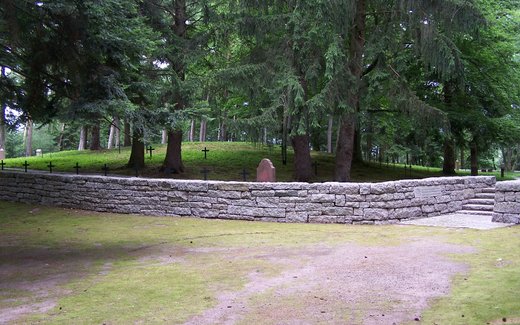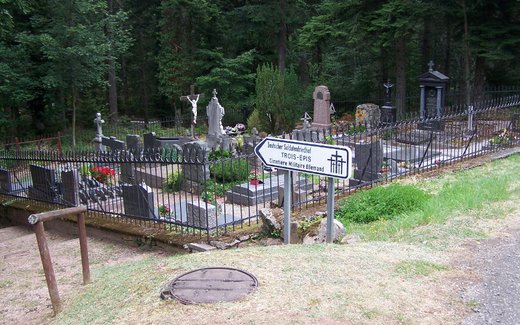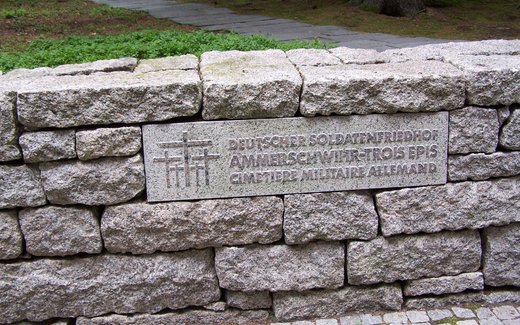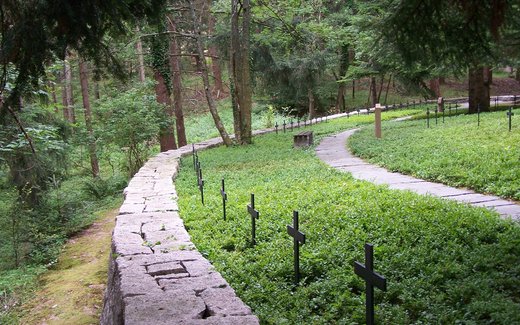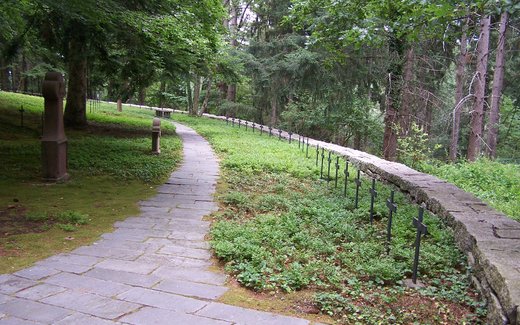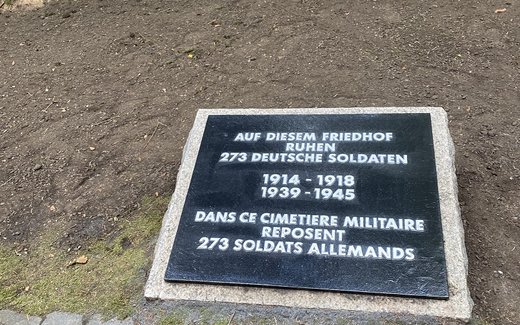France
Ammerschwihr
Total Occupation: 273 fatalities
Total Occupation: 273 fatalities
Contact
Rue Chanoine Albert Saltzmann
Ammerschwihr
France
Open all year round
273 German war dead from the First and Second World Wars rest on this war cemetery. World War I: 259 II. World War I: 14 Ammerschwihr ("Les-Trois-Epis") Département Haut-Rhin The German military cemetery in Ammerschwihr was established by the German troops during the war in the district of "Les Trois Epis" (the three ears of corn). The first casualties came during the first border battles in August 1914. A larger number of soldiers lost their lives in 1915 during the battles around Munster, in the Kaysersberg valley and near Ammerschwihr. The trench warfare from 1916 to 1918 also claimed many victims. Many also succumbed to their serious injuries in the military hospitals. Most of the dead belonged to units whose home garrisons were in Lower Saxony, Brunswick, East Frisia and Brandenburg. The French military authorities expanded the cemetery after the war by adding more fallen soldiers from the local area. The dead of the Second World War died in the attempt to halt the advance of American units on the Vosges ridge in the winter of 1944/45 or succumbed to their injuries in military hospitals. Ammerschwihr was again badly affected by these battles. Repair work between the wars The Volksbund Deutsche Kriegsgräberfürsorge e.V. (German War Graves Commission) carried out the first work to improve the condition of the cemetery on the basis of an agreement reached with the French military authorities in 1926. However, this had to be limited to a landscaping overhaul. The problem of permanently marking the graves initially remained unresolved due to a lack of foreign currency and the outbreak of the Second World War in 1939. Final design Following the conclusion of the Franco-German War Graves Agreement on July 19, 1966, the Volksbund Deutsche Kriegsgräberfürsorge e.V. - with financial support from the Federal Government - was able to undertake the final design of the German military cemeteries of the First World War in France. Young helpers had already begun preparatory gardening work. in 1971, the previous temporary wooden grave markers were replaced with metal crosses bearing the names and dates of those buried here. Young helpers laid the necessary 35-kilogram concrete foundations at the graves, which were transported by the German army. A year later, the cemetery was given a natural stone wall as a border and a circular path covered with stone slabs. The grave beds were planted with cranberries. The monuments erected by the troops and still preserved were restored. Finally, the entire cemetery grounds were given a thorough landscaping overhaul. photos: Fritz Braun FwdR

